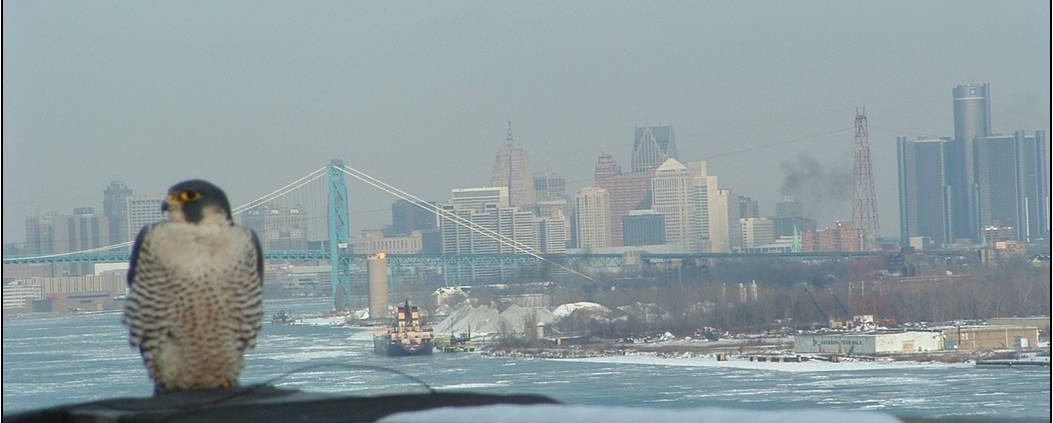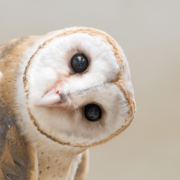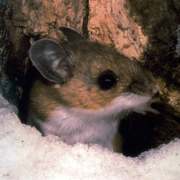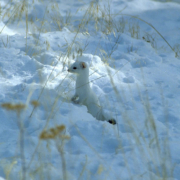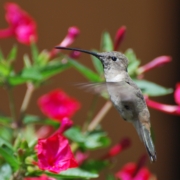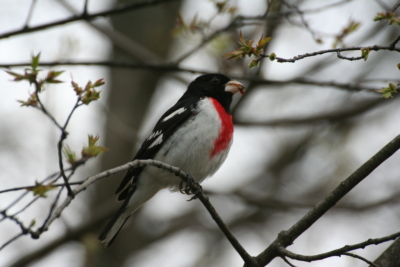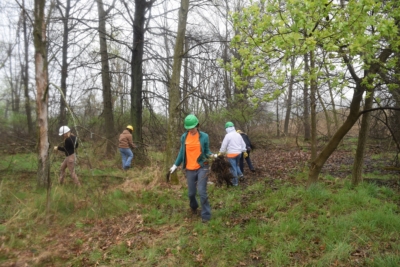Peregrines: Not Your Average City Dweller
One of my favorite bird species is the spectacular bird-of-prey, the peregrine falcon (Falco peregrinus). This bird can be found on six continents around the world, though it does not occur in large numbers in most areas.
This bird is amazing because not only has it recovered from the brink of extinction in North America, it is now thriving in many regions because it has adapted really well to urban settings. It naturally nests on ledges high up on cliffs, easily out of reach of most predators. With the increasing growth of cities with tall buildings and abundant prey in the modern era, peregrines have found new nesting opportunities on the roofs and ledges of skyscrapers and other tall structures like water towers, power pylons, and bridges.
At WHC’s main office in Silver Spring, we routinely see the resident pair of peregrine falcons soaring high above us and hunting the city’s numerous pigeons. Peregrines and other falcons are aerial hunters, meaning they catch their prey while in flight. Peregrines use a swift dive, or “stoop,” that is spectacular to watch. A peregrine’s stoop can reach over 200 mph (320 kmh), making it the fastest animal on earth!
These birds are known for using their speed and agility to prey upon a wide variety of birds, mostly medium-sized birds, including several species that can be a nuisance in urban settings like pigeons and starlings. Although falcons won’t eliminate the pigeon or starling population in a city, they can certainly help to keep it in check.
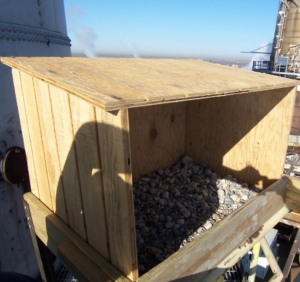
A nest box like this one at DTE’s River Rouge facility is a common way to enhance habitat for peregrines.
If you want to help peregrines at your corporate facility, one of the best ways is to work with your state wildlife agency to implement the appropriate measures for your site. These birds are still protected by law and can be very defensive of their nests, so before taking any actions it will be important to consult with the agency about things like safety precautions or requirements related to their protection. A common and often successful project is the installation and monitoring of a nest box for peregrines. This kind of structure provides a secure, ledge-like nesting location that provides some protection against the elements, and many facilities use a nest cam to monitor the nest with minimal disturbance to the birds. Discussions with your wildlife agency will also help determine if other projects such as artificial raptor perches, banding of peregrine chicks, or release of captive-reared peregrines would be appropriate for your facility.
